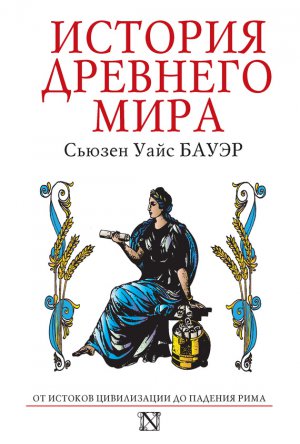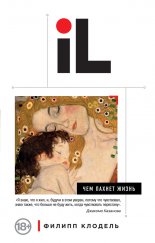»стори€ ƒревнего мира. ќт истоков ÷ивилизации до падени€ –има Ѕауэр —ьюзен

Л628Ы јдаптаци€ пересказа ƒж. ј. Ѕринкманом (J. A. Brinkman) различных версий надписей Ac-сархадона в: ЂThrough a Glass Darkly: EsarhaddonТs Retrospects on the Downfall of Babylonї, Journal of the American Oriental Society 103:1 (1983), p.†39.
Л629Ы Brinkman, ЂThrough a Glass Darklyї, p.†41.
Л630Ы Frame, 167.
Л631Ы Francis Reynolds, ed., State Archives of Assyria, vol.†18: The Babylonian Correspondence of Esarhad-don and Letters to Assurbartipal and Sin-saru-iskun from Northern md Central Babylonia (2003), p.†4.
Л632Ы E. D. Phillips, ЂThe Scythian Domination in Western Asia: Its Record in History, Scripture, and Archaeologyї, WorldArchaeology 4:2 (1972), p.†131.
Л633Ы —легка перефразированный дл€ лучшего понимани€ перевод из: Ivan Starr, State Archives of Assyria, vol.†4, Queries to the Sungod: Divination and Politics in Sargonid Assyria (1990), Queries 18,20, 24, and 43, pp.†22, 24Ц25,30,48.
Л634Ы —. H. Emilie Haspels, The Highlands of Phrygia: Sites and Monuments, vol.†1, The 7ert (1971).
Л635Ы Strabo, The Geography of Strabo in Eight Volumes (1928), 1.3.21.
Л636Ы Luckenbill, Ancient Records, vol.†2, pp.†516, 530,533,546.
Л637Ы Starr, Query 84, p.†98.
Л638Ы Ќесколько сокращенный текст из: Laessoe, p.†114.
Л639Ы Clayton, p.†193.
Л640Ы Shaw, p.†358.
Л641Ы Ќесколько сокращенный текст из: Frame, p.†194.
Л642Ы Clayton, p.†195.
Л643Ы —тела √ебель Ѕарка, перевод из: Assmann, pp.†336Ц337, €зык несколько осовременен.
Л644Ы Herodotus, 2.151; also Redford, Egypt, p.†431.
Л645Ы Assmann, p.†337.
Л646Ы James Henry Breasted, A History of Egypt (1967), p.†468.
Л647Ы Nah. 3:8Ц10.
Л648Ы Olmstead, History of Assyria, p.†417.
Л649Ы Ibid., p.†422.
Л650Ы —тела Ќитикрет, несколько перефразированный вариант перевода из: Shaw, p.†376.
Л651Ы Olmstead, History of Assyria, p.†423.
Л652Ы Phillips, ЂThe Scythian Domination in Western Asiaї, p.†132.
Л653Ы Konstantinos Staikos, The Great Libraries: From Antiquity to the Renaissance (3000 BC to AD 1600) (2000), p.†13.
Л654Ы Condensed slightly from Benjamin R. Foster, Before the Muses: An Anthology of Akkadian Literature, vol.†2 (1996), p.†714.
Л655Ы Frame, p.†255.
Л656Ы Ibid., p.†258.
Л657Ы ’ронологически размещенные эпиграфы из John Malcom Russell, The Writing on the Wall: Studies in the Architectural Context of Late Assyrian Palace Inscriptions (1999), p.†159.
Л658Ы Herodotus, 1.98.
Л659Ы A. T. Olmstead, History of the Persian Empire (1959), p.†30.
Л660Ы Starr, pp.†267Ц270.
Л661Ы Saggs, Babylonians, p.†161.
Л662Ы Frame, p.†260.
Л663Ы Saggs, Babylonians, p.†114.
Л664Ы Ezra 4:9Ц10, NIV.
Л665Ы P. Calmeyer, ЂGreek Historiography and Acheamenid Reliefsї, in Achaemenid History II: The Greek Sources, ed. Heleen Sancisi-Weerdenburg and Amelie Kuhrt (1987), p.†11.
Л666Ы David Frankel, The Ancient Kingdom of Urartu (1979), p.†19.
Л667Ы Phillips, p.†135.
Л668Ы 2 Kings 23.
Л669Ы Herodotus, 1.105.
Л670Ы Ibid., 1.106.
Л671Ы Buckley, p.†37.
Л672Ы Phaedo 109b, quoted in Robin Waterfield, Athens (2004), p.†41.
Л673Ы Pomeroy et al., p.†92.
Л674Ы Herodotus, 4.156Ц157.
Л675Ы Ibid., 4.159.
Л676Ы Fragment 5, quoted in Buckley, p.†66.
Л677Ы Fragment 6, quoted in Buckley, p.†67.
Л678Ы Herodotus 6.52.
Л679Ы Luckenbill, Ancient Records, vol.†2, pp.†291Ц292.
Л680Ы Herodotus, 6.57.
Л681Ы Lycurgus 15, in Plutarch, Greek Lives, translated by Robin Waterfield (1998), p.†24.
Л682Ы Lycurgus 12Ц14, in Plutarch, Greek Lives, pp.†18Ц22.
Л683Ы Lycurgus 10, in Plutarch, Greek Lives, p.†18.
Л684Ы Herodotus, 7.104.
Л685Ы Waterfield, p 39.
Л686Ы Eusebius, Chronicle, in A. Schoene and H. Petermann, trans. Armeniam versionem Latine factam AD libros manuscriptos recensuit H. Petermann (1875), pp.†182Ц183.
Л687Ы Waterfield, p.†43.
Л688Ы Eusebius, Chronicle, p.†198.
Л689Ы Thucydides, 1.125.
Л690Ы Thucydides, 1.126.
Л691Ы Solon 12, in Plutarch, Greek Lives, p.†55.
Л692Ы Athenian Constitution, translated by H. Rackham, 2.1Ц3, in Aristotle in 23 Volumes, vol.†20.
Л693Ы Solon 17, in Plutarch, Greek Lives, p.†61.
Л694Ы Lycurgus 15, in Plutarch, Greek Lives, p.†25.
Л695Ы Michael Gagarin, Drakon and Early Athenian Homicide Law (1981), pp.†19Ц21.
Л696Ы Solon 1, in Plutarch, Greek Lives, p.†46.
Л697Ы Solon 14, in Plutarch, Greek Lives, p.†57.
Л698Ы Buckley, pp.†91Ц92.
Л699Ы Solon 6, in Plutarch, Greek Lives, p.†50.
Л700Ы Herodotus, 1.29.
Л701Ы Solon 25, in Plutarch, Greek Lives, pp.†69Ц70.
Л702Ы Livy, 1.15, Early History of Rome, p.†50.
Л703Ы R. M. Ogilvie, ЂIntroduction: Livyї, in Livy, Eariy History of Rome, p.†18.
Л704Ы Livy, 1.1Ц1.2, Early History of Rome, pp.†34Ц36.
Л705Ы Livy, 1.15, Early History of Rome, p.†50.
Л706Ы Livy, 1.16, Early History of Rome, p.†51.
Л707Ы Livy, 1.19, Early History of Rome, p.†54.
Л708Ы Dionysius of Halicarnassus, Roman Antiquities, vol.†1, Books IЦII (1937), 2.62.
Л709Ы Livy, 1.33, Early History of Rome, p.†72.
Л710Ы Dionysius of Halicarnassus, Roman Antiquities, vol.†2, Books IIIЦIV (1939), 3.45.
Л711Ы Gary Forsythe, A Critical History of Eariy Rome: From Prehistory to the First Punic War (2005), pp.†39Ц40.
Л712Ы Salvatore Settis, ed., The Land of the Etruscans: From Prehistory to the Middle Ages (1985), p.†30.
Л713Ы Jacques Heurgon, Daily Life of the Etruscans (1964), p.†136.
Л714Ы Christopher S. Mackay, Ancient Rome: A Military and Political History (2004), p.†12.
Л715Ы Dionysius of Halicarnassus, Roman Antiquities, vol.†2,3.61Ц62.
Л716Ы Ray Kamoo, Ancient and Modem Chaldean History: A Comprehensive Bibliography of Sources (1999), p.†XXXI.
Л717Ы Luckenbill, Ancient Records, vol.†2, p.†417.
Л718Ы Kamoo, p.†XXXIII; Luckenbill, Ancient Records, vol.†2, p.†419.
Л719Ы Herodotus, 1.103.
Л720Ы Christopher Johnston, ЂThe Fall ofNinevehї, Journal of the American Oriental Society 22 (1901), p.†21.
Л721Ы Diodorus Siculus, Bibliotheca Historica, vol.†1 (1956), p.†171; Paul Haupt, ЂXenophonТs Account of the Fall of Ninevehї, in Journal of the American Oriental Society 28 (1907), p.†101.
Л722Ы Luckenbill, Ancient Records, vol.†2, p.†420.
Л723Ы Nah. 2:6Ц10, 3:3, 3:19, NIV.
Л724Ы Assmann, p.†338.
Л725Ы 2 Kings 23:29, NIV.
Л726Ы 2 Chron. 35:21, NIV.
Л727Ы Luckenbill, Ancient Records, vol.†2, p.†421.
Л728Ы 2 Kings 23:31Ц35.
Л729Ы Verbrugghe and Wickersham, p.†58.
Л730Ы Jer. 46:2Ц6, NIV
Л731Ы Donald B. Redford, From Slave to Pharaoh: The Black Experience of Ancient Egypt (2004), p.†146.
Л732Ы Josephus, The Antiquities of the Jews, 10.6.1.
Л733Ы Jer. 36.
Л734Ы Quoted in Ronald H. Sack, Images of Nebuchadnezzar: The Emergence of a Legend (2004), p.†49. я крайне благодарна мистеру —аку за сделанную им тематическую организацию древних и классических источников по царствовани€м Ќавуходоносора и Ќабонида.
Л735Ы Herodotus, 2.158.
Л736Ы Clayton, p.†196.
Л737Ы Herodotus, 4.42; Shaw, p.†381; Redford, Egypt, p.†452.
Л738Ы Herodotus, 4.42.
Л739Ы Josephus, Antiquities of the Jews, 10.6.2.
Л740Ы Sack, p.†49.
Л741Ы 2 Kings 24; Rogerson, p.†151.
Л742Ы Josephus, Antiquities of the Jews, 10.7.3.
Л743Ы The Wadi-Brisa Inscription, in Sack, p.†16.
Л744Ы Verbrugghe and Wickersham, p.†58.
Л745Ы Saggs, Babylonians, p.†167.
Л746Ы —легка сокращенный парафраз из ƒиодора —ицилийского: Diodorus Siculus, pp.†149Ц150.
Л747Ы Verbrugghe and Wickersham, p.†59.
Л748Ы Saggs, Babylonians, p.†166.
Л749Ы Verbrugghe and Wickersham, p.†58.
Л750Ы Politics 3.1276, in H. Rackham, trans., Aristotle in 23 Volumes, vol.†21 (1944).
Л751Ы Redford, Egypt, p.†461.
Л752Ы Redford, From Slave to Pharaoh, p.†146.
Л753Ы Clayton, p.†196.
Л754Ы Redford, Egypt, p.†463.
Л755Ы Josephus, Antiquities of the Jews, 10.7.3.
Л756Ы Jer. 37:7Ц10, NIV.
Л757Ы Jer. 38:4; also Josephus, Antiquities of the Jews, 10.7.3.
Л758Ы Letter 4, quoted in Rogerson, p.†153.
Л759Ы 2 Kings 25:4Ц6, NIV.
Л760Ы Josephus, Antiquities of the Jews, 10.8.4.
Л761Ы Raymond Philip Dougherty, Nabonidus and Bekhazzar: A Study of the Closing Events of the Neo-Babylonian Empire (1929), p.†33; Herodotus, 1.74.
Л762Ы Herodotus 1.74.
Л763Ы Dan. 4:33, NIV.
Л764Ы Quoted in Sack, p.†44.
Л765Ы Matthias Henze, The Madness of King Nebuchadnezzar: The Ancient Near Eastern Origins and Early History of Interpretation of Daniel 4 (1999), pp.†96Ц99.
Л766Ы Herodotus, 1.107.
Л767Ы Ќижеследующее вз€то из √еродота: Herodotus, 1.108Ц119.
Л768Ы Herodotus, 1.119.
Л769Ы 2 Kings 25:27Ц29.
Л770Ы The Chronicle of Jerachmeel, quoted in Sack, pp.†58Ц59.
Л771Ы Verbrugghe and Wickersham, p.†60.
Л772Ы Quoted in Sack, p.†22. –абота ћегасфена утрачена, но она цитируетс€ у ≈всеви€.
Л773Ы Leick, The Babylonians, p.†64.
Л774Ы Dougherty, p.†24.
Л775Ы Quoted in Oates, p.†132.
Л776Ы Quoted in Dougherty, pp.†72Ц73.
Л777Ы Diodorus Siculus, 2.32.2Ц3.
Л778Ы Herodotus, 1.123Ц126.
Л779Ы Ibid., 1.129Ц130.
Л780Ы Ibid., 1.75Ц87.
Л781Ы Ibid., 1.88Ц90.
Л782Ы Xenophon, The Education of Cyrus (2001), 8.2.1.
Л783Ы Ibid., 1.1.2.
Л784Ы Ibid., 1.1.5.
Л785Ы Ibid., 8.2.8-Ё.
Л786Ы Ibid., 8.2.11Ц12.
Л787Ы Pierre Briant, From Cyrus to Alexander: A History of the Persian Empire (2002), pp.†38Ц40.
Л788Ы The Verse Account of Nabonidus, quoted in Sack, p.†17.
Л789Ы ’арранска€ надпись Ќабонида, перевод ќппенгейма (Oppenheim), цит. в: Henze, pp.†59Ц60.
Л790Ы The Verse Account of Nabonidus, quoted in Sack, p.†18.
Л791Ы Gene R. Garthwaite, The Persians (2005), p.†29.
Л792Ы Herodotus, 1.189.
Л793Ы Xenophon, Education of Cyrus, 8.5.13.
Л794Ы олонна ира, насколько сжатый вариант перевода из: Dougherty, pp.†176Ц168.
Л795Ы Ezra 1:1Ц3, NIV.
Л796Ы Ezra 3:12Ц13, NIV.
Л797Ы Herodotus 1.164Ц165.
Л798Ы A. Trevor Hodge, Ancient Greek France (1998), p.†19.
Л799Ы Barry Cunliffe, The Extraordinary Voyage of Pytheas the Greek: The Man Who Discovered Britain (2002), p.†16.
Л800Ы Daithi OТHogain, The Celts: A History (2002), p.†1.
Л801Ы Ibid., p.†2.
Л802Ы Hodge, pp.†5, 190Ц193.
Л803Ы Heurgon, p.†13.
Л804Ы David Soren et. al., Carthage: Uncovering the Mysteries and Splendors of Ancient Tunisia (1990),
Л805Ы Politics, 3.1280, Rackham, Aristotle in 21 Volumes, vol.†21.
Л806Ы Heurgon, p.†13.
Л807Ы Amaldo Momigliano, ЂAn Interim Report on the Origins of отеї, Journal of Roman Studies 53:1Ц2 (1960), pp.†108Ц109.
Л808Ы Livy, Early History of Rome, 1.41Ц43.
Л809Ы Ibid., 1.47.
Л810Ы This quote and the following from Livy, Early History of Rome, 2.10.
Л811Ы Thomas Babington Macaulay, ЂHoratius: A Lay Made About the Year of the City CCCLXї, строфа 27.
Л812Ы Polybius, The Rise of the Roman Empire (1979), 3.22.
Л813Ы Livy, Eariy History of Rome, 5.34.
Л814Ы OТHogain, p.†2; Bernhard Maier, The Celts: A History from Earliest Times to the Present (2003), pp.†44Ц45.
Л815Ы Polybius, Rise of the Roman Empire, 2.17.
Л816Ы Maier, p.†24; OТHogain, p.†7.
Л817Ы Cunliffe, pp.†19Ц20.
Л818Ы Epitome of the Philippic History, quoted in Maier, p.†38.
Л819Ы Mackay, pp.†26Ц28.
Л820Ы Livy, Early History of Rome, 2.17Ц19.
Л821Ы Edgerton, p.†54.
Л822Ы Thapar, Early India, p.†152.
Л823Ы The Laws of Manu, translated by Georg Buhler (1970), 1.93Ц100.
Л824Ы Jan Y. Fenton et al., Religions of Asia (1993), pp.†46Ц48.
Л825Ы Thapar, Early India, pp.†146Ц148.
Л826Ы Rig Veda 10.90, in Edgerton, p.†68.
Л827Ы Wolpert, p.†39.






